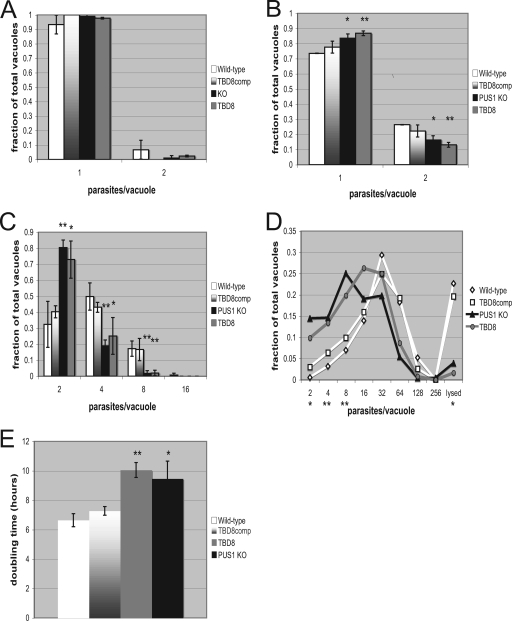FIG. 5.
pus1 mutants replicate significantly more slowly than WT parasites. Cultures were infected and then analyzed at 4, 12, and 24 h postinfection (A, B, and C, respectively). The data represent three biological replicates done blinded in technical duplicates performed by counting the number of parasites per vacuole in 15 fields of view. Significance was calculated by grouping PUS1 WT strains versus pus1 mutant strains. *, P < 0.05; **, P < 0.01 (relative to the WT strain). (D) pus1 mutants continue to replicate significantly more slowly than WT parasites at 48 h. Parasites were counted and analyzed at 48 h postinfection as described for panels A, B, and C. Although the data do not represent a continuum between each increment (division within a given vacuole is synchronous), the data are presented as a line graph to allow easy comparison between the different strains over the full range of values. Significance was calculated by grouping PUS1 WT strains versus pus1 mutant strains at each vacuole size. *, P < 0.05; **, P < 0.01. (E) The doubling time between the 12- and 48-hour time points was calculated for each of the four strains. *, P < 0.02; **, P < 0.001.

